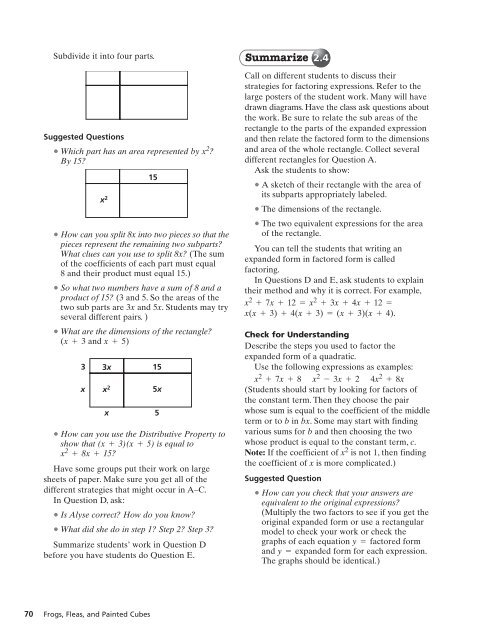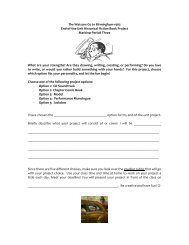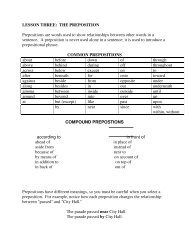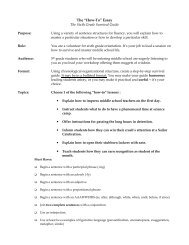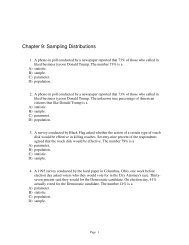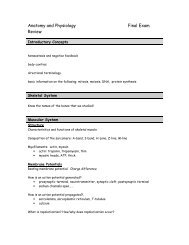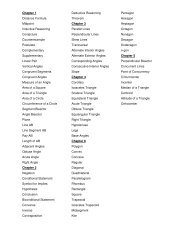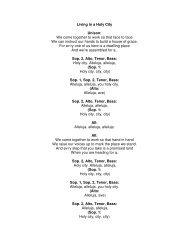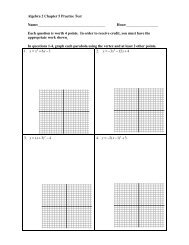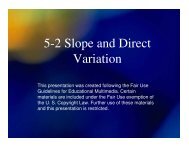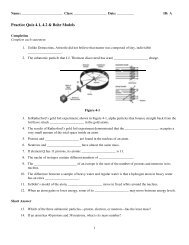2.4 Factoring Quadratic Expressions - Mona Shores Blogs
2.4 Factoring Quadratic Expressions - Mona Shores Blogs
2.4 Factoring Quadratic Expressions - Mona Shores Blogs
Create successful ePaper yourself
Turn your PDF publications into a flip-book with our unique Google optimized e-Paper software.
Subdivide it into four parts.Suggested Questions• Which part has an area represented by x 2 ?By 15?• How can you split 8x into two pieces so that thepieces represent the remaining two subparts?What clues can you use to split 8x? (The sumof the coefficients of each part must equal8 and their product must equal 15.)• So what two numbers have a sum of 8 and aproduct of 15? (3 and 5. So the areas of thetwo sub parts are 3x and 5x. Students may tryseveral different pairs. )• What are the dimensions of the rectangle?(x+3 and x+5)3xx 23xx155xx 2 15• How can you use the Distributive Property toshow that (x+3)(x+5) is equal tox 2 + 8x+15?Have some groups put their work on largesheets of paper. Make sure you get all of thedifferent strategies that might occur in A–C.In Question D, ask:• Is Alyse correct? How do you know?• What did she do in step 1? Step 2? Step 3?Summarize students’ work in Question Dbefore you have students do Question E.5Summarize <strong>2.4</strong>Call on different students to discuss theirstrategies for factoring expressions. Refer to thelarge posters of the student work. Many will havedrawn diagrams. Have the class ask questions aboutthe work. Be sure to relate the sub areas of therectangle to the parts of the expanded expressionand then relate the factored form to the dimensionsand area of the whole rectangle. Collect severaldifferent rectangles for Question A.Ask the students to show:• A sketch of their rectangle with the area ofits subparts appropriately labeled.• The dimensions of the rectangle.• The two equivalent expressions for the areaof the rectangle.You can tell the students that writing anexpanded form in factored form is calledfactoring.In Questions D and E, ask students to explaintheir method and why it is correct. For example,x 2 + 7x+12=x 2 + 3x+4x+12=x(x+3)+4(x+3)=(x+3)(x+4).Check for UnderstandingDescribe the steps you used to factor theexpanded form of a quadratic.Use the following expressions as examples:x 2 + 7x+8 x 2 - 3x+2 4x 2 + 8x(Students should start by looking for factors ofthe constant term. Then they choose the pairwhose sum is equal to the coefficient of the middleterm or to b in bx. Some may start with findingvarious sums for b and then choosing the twowhose product is equal to the constant term, c.Note: If the coefficient of x 2 is not 1, then findingthe coefficient of x is more complicated.)Suggested Question• How can you check that your answers areequivalent to the original expressions?(Multiply the two factors to see if you get theoriginal expanded form or use a rectangularmodel to check your work or check thegraphs of each equation y=factored formand y=expanded form for each expression.The graphs should be identical.)70 Frogs, Fleas, and Painted Cubes


